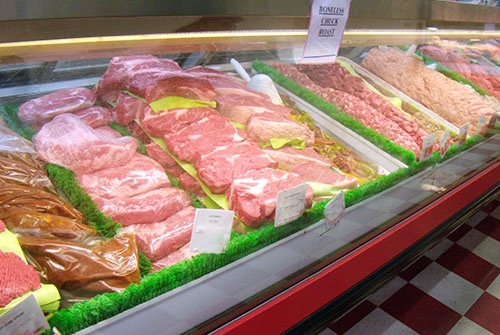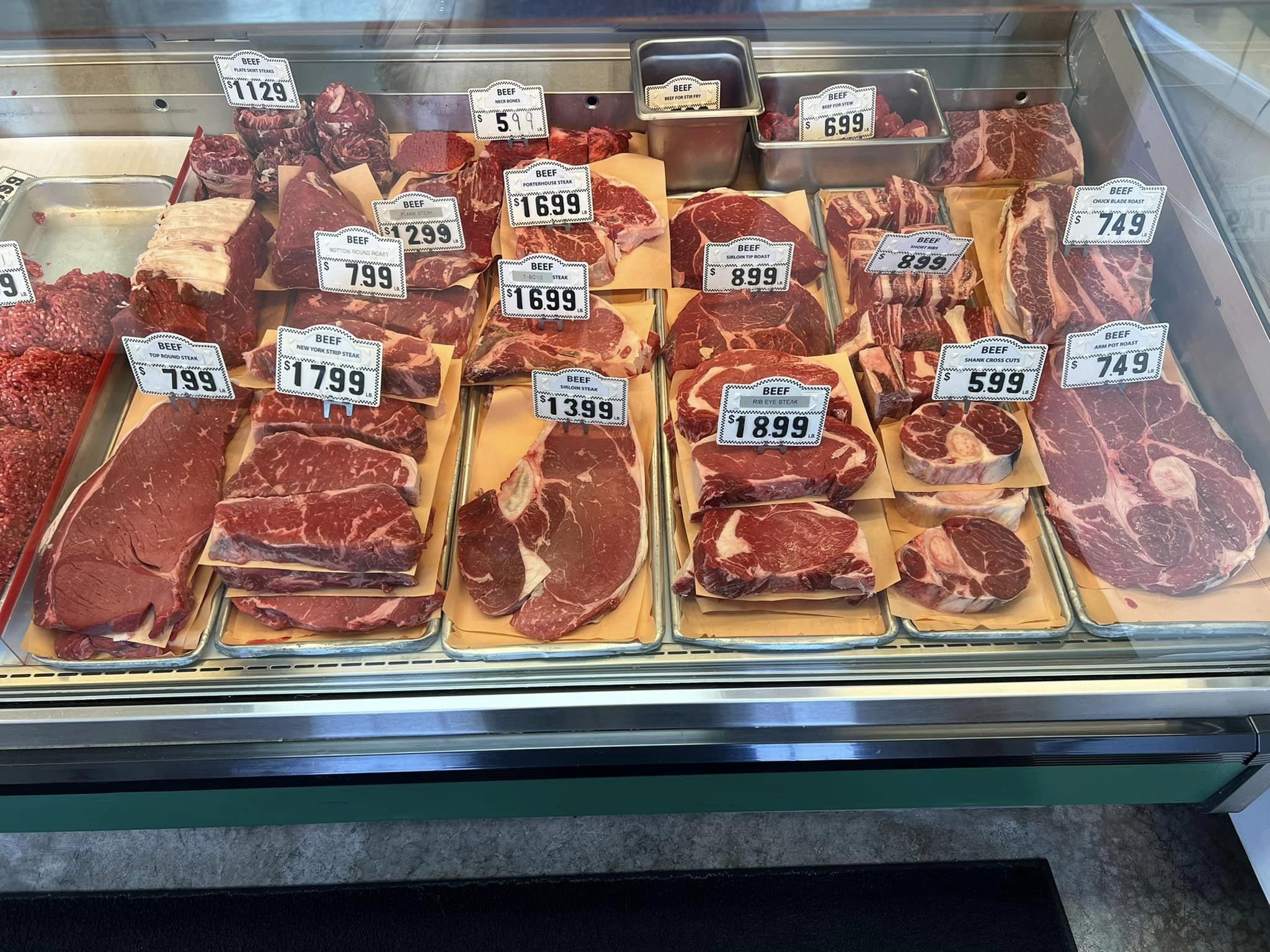What Makes Bagley Farms Meat Market Edwardsville IL Stick Out for Meat Lovers
What Makes Bagley Farms Meat Market Edwardsville IL Stick Out for Meat Lovers
Blog Article
Reveal the Art of the Butcher's Cut in a Modern Meat Market
In the ever-evolving landscape of modern-day meat markets, the butcher's cut has actually transcended its standard origins, merging olden craftsmanship with contemporary practices. bagley farms meat market edwardsville il. Today's butchers are not merely cpus of meat; they are experienced craftsmens who highlight sustainability and moral sourcing. Their knowledge in selecting and preparing cuts customized to particular cooking needs offers an unparalleled eating experience. Yet, what truly sets the modern butcher apart is their ability to create a much deeper link between customers and the origins of their meat. How do these masters balance custom with technology, and what effects does this have for the future of meat usage?
Development of Butchery Strategies

The mid-20th century saw butchery techniques better refined by clinical insights into muscle biology and meat aging, enhancing both tenderness and preference. Developments like vacuum packaging and refrigeration extended product shelf-life, allowing butchers to expand offerings and improve high quality control. This period likewise noted the rise of specific devices, such as band saws and meat slicers, which raised precision and performance in meat handling.
Electronic systems now assist in monitoring animal provenance and maximizing cuts to satisfy details customer choices. Additionally, a revival in artisanal butchery has emerged, mixing conventional skills with modern-day expertise to cater to customers seeking honest and lasting meat alternatives.

Recognizing Meat Cuts

Comprehending the complexities of meat cuts is crucial for both butchers and customers seeking quality and worth. For butchers, exact cuts mirror skill and respect for the craft, guaranteeing marginal waste and ideal return.
The key categories of meat cuts include primal, sub-primal, and retail cuts. Primitive cuts, such as the loin, rib, and chuck, are the large areas at first separated from the carcass. Butchers then break these down better right into sub-primal cuts, before lastly producing retail cuts offered to consumers, like ribeye or tenderloin. Each phase requires mindful interest to physiological structure and muscle make-up.
Comprehending muscle composition is important; muscular tissues utilized a lot more regularly by the animal tend to be harder and are best suited for slow food preparation approaches, while less-used muscles, like those discovered in the loin, are extra tender and suitable for cooking or roasting. Knowledge with these differences encourages customers to make educated options, enhancing their culinary endeavors.
Choosing Top Quality Meat
Selecting the right meat entails even more than simply choosing an aesthetically appealing item from the display screen. The art of selecting high quality meat calls for a critical eye and knowledge of particular characteristics that represent quality and excellence.
Secondly, take into consideration the marbling, which describes the white flecks of fat within the muscle. Correct marbling is an essential indication of inflammation and flavor, as it thaws during food preparation, improving the meat's juiciness. Remember, higher marbling typically content associates with premium top quality cuts, such as USDA Prime.
Structure is another vital variable; meat should feel strong to the touch, not slimy or he said extremely soft. In addition, bear in mind the aroma. Fresh meat should have a clean, neutral odor, devoid of any kind of sour or off-putting odors.
Matching Cuts With Food Preparation Approaches
Successfully combining cuts of meat with the proper food preparation approaches is important for achieving optimal flavor and structure. Various cuts differ in inflammation, marbling, and connective tissue content, each requiring specific strategies to open their capacity. As an example, tender cuts like filet mignon and ribeye, with their fundamental marbling, benefit from high-heat, quick-cooking techniques such as cooking or pan-searing. These methods improve the meat's natural flavors and make certain a juicy finish.
Conversely, harder cuts like brisket and chuck roast are rich in collagen, which breaks down right into gelatin when cooked slowly. These cuts are ideal for braising or slow roasting, permitting the meat to tenderize gradually and develop deep, complex flavors. Cuts such as short ribs and pork shoulder get on well with slow-cooking approaches, where prolonged cooking times transform their durable textures into succulent meals.
Lamb shanks and oxtail, which require extended cooking to soften, are ideal prospects for stewing or sluggish simmering. These methods coax out rich, hearty tastes while preserving moisture. By comprehending the unique attributes of each cut, chefs and home chefs alike can boost their cooking creations, making certain each meal is both pleasing and unforgettable.
The Butcher's Function Today
Navigating the developing landscape of the modern-day meat market, the butcher's duty today expands past mere preparation of cuts. Contemporary butchers are cooking artisans, teachers, and advocates for lasting techniques.
In enhancement to crafting exact cuts, butchers currently engage straight with customers, providing cooking guidance and tailoring choices to suit specific demands and preferences. Their experience in meat aging, marbling, and flavor profiles equips customers to make informed decisions, enhancing their culinary experiences. This customized service exemplifies the butcher's evolving role as a relied on expert in the cooking area.
In addition, butchers are crucial in lessening waste, using whole pets to develop diverse items such as sausages and supplies - bagley farms meat market go to this website edwardsville il. This thorough strategy not only appreciates the pet however also aligns with modern sustainability goals. By doing this, the modern-day butcher embodies both practice and innovation, adapting to an ever-changing market while maintaining the virtuosity and honesty of their craft

Conclusion
The modern butcher's craft delicately weaves typical methods with modern-day advancements, highlighting lasting methods and moral sourcing. Proficiency in understanding diverse meat cuts and high quality indicators encourages butchers to supply educated recommendations, lining up certain cuts with optimal cooking methods. This experience not only raises culinary experiences however likewise strengthens the link in between consumers and the beginnings of their food. By honoring historical techniques while embracing modern demands, the butcher's role remains crucial in today's innovative meat market.
Report this page